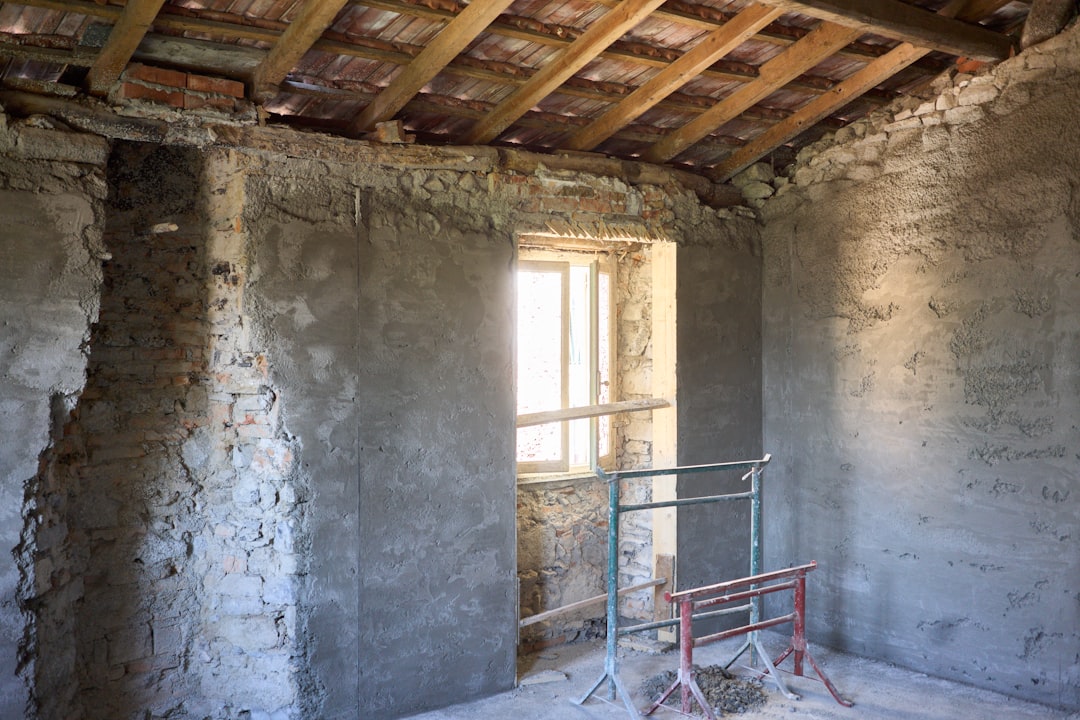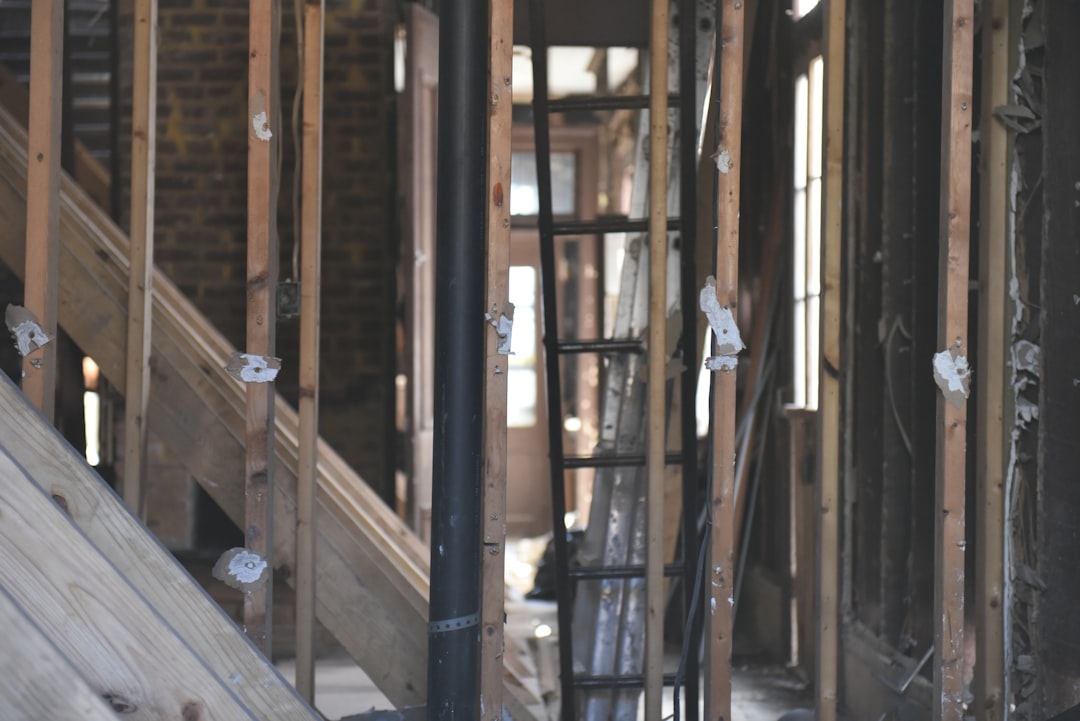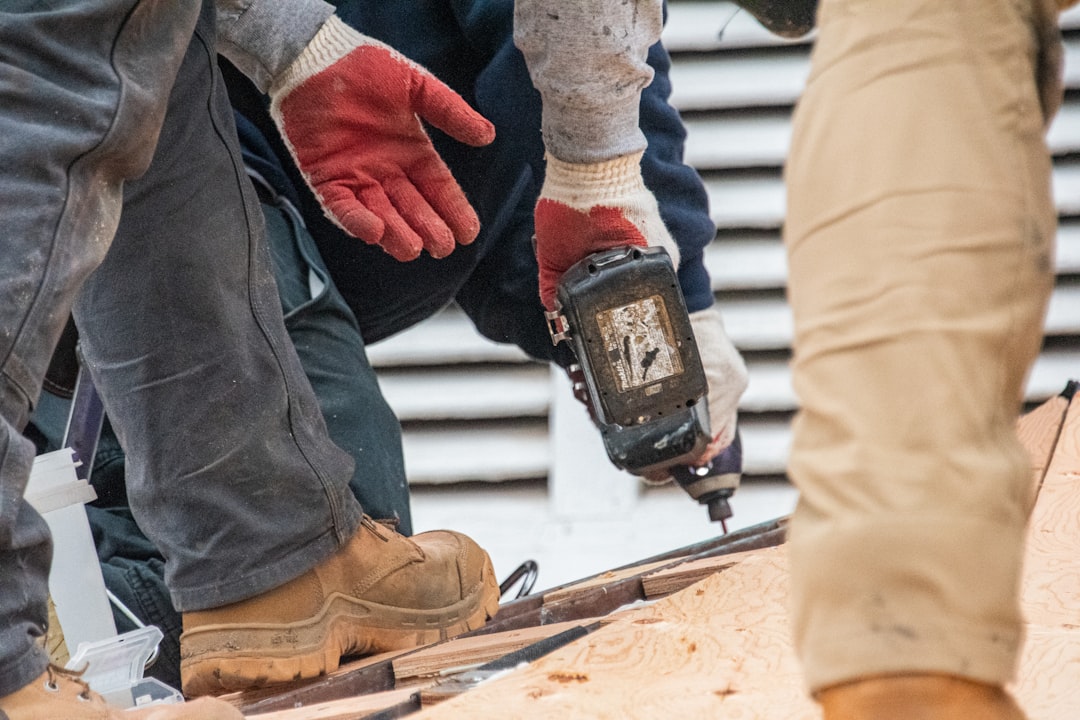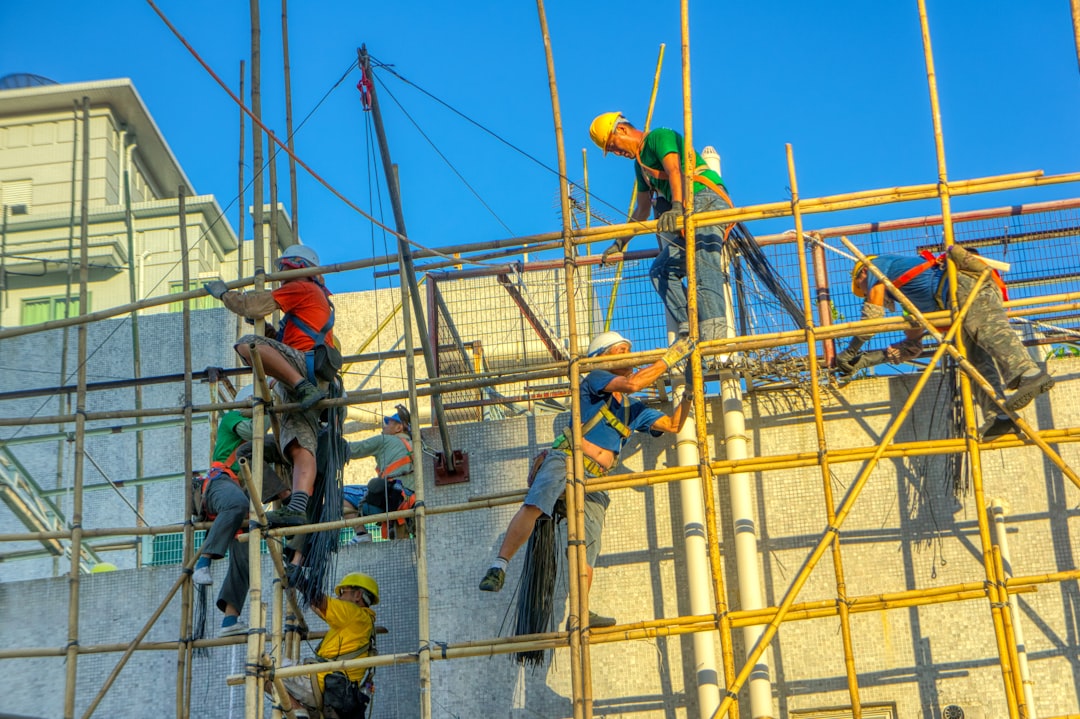

Engage prospects with a scan and streamline customer engagement with FREE QR code marketing tools by Sona – no strings attached!
Create a Free QR CodeFree consultation

No commitment

Engage prospects with a scan and streamline customer engagement with FREE QR code marketing tools by Sona – no strings attached!
Create a Free QR CodeFree consultation

No commitment
In today’s digitally driven landscape, aging-in-place remodeling contractors face a unique challenge: guiding families through major life transitions while maintaining consistent, measurable engagement across offline and online touchpoints. A brochure picked up at a community event or a conversation during a home assessment often sparks real interest, yet without a seamless path to act, that intent can evaporate. QR codes solve this by converting every printed surface and in-person encounter into a direct path to booking pages, safety assessments, and educational resources.
Used thoughtfully, QR codes shorten decision timelines and reduce friction for time-pressed caregivers, adult children, and homeowners. They capture data at the moment of interest, feed it into your CRM and marketing tools, and enable targeted follow-up that leads to actual consultations and signed agreements. The result is a connected customer journey: one that begins with curiosity in a physical space and continues online with timely, personalized actions that are easy to track and optimize over time.
Integrated across your marketing mix, QR codes deliver accountability and clarity. You will see which neighborhoods, seminars, or print pieces are driving high-value leads, and you will gain the ability to adapt faster with dynamic, updatable assets that always reflect your latest offers, credentials, or compliance guidance.

Contractors often invest in postcards, brochures, and community event materials without a reliable way to connect initial interest to a specific action. Replacing analog processes with QR-enabled experiences addresses this gap. A scan can open a mobile-optimized booking page, trigger a safety assessment questionnaire, or deliver a grant eligibility guide like renovations for seniors. Each interaction is recorded and attributed, which means you can stop guessing and start optimizing.
Begin by turning static materials into trackable gateways. Swap paper forms for digital intake flows, add QR codes to appointment cards, and centralize all educational assets behind short, friendly calls to action. Then define success metrics such as booked consultations, completed assessments, and downloads of remodeling checklists. Comparing before-and-after performance by asset and channel reveals what is working and where to focus budget.
For example, converting a printed home safety checklist into a QR-enabled interactive version often doubles completed assessments because families can engage privately at their own pace. With a platform such as Sona QR, you can enrich each scan with campaign tags, tie it to a contact record later through account identification, and launch automated nurture steps tailored to the content scanned. Start creating QR codes for free

Aging-in-place remodeling decisions are high stakes and typically involve multiple stakeholders. Prospects encounter your brand in settings where time is limited and emotions run high: a community seminar, a physician referral, or a caregiver’s break between errands. Without an immediate, simple way to act, motivated families frequently leave without taking the next step. QR codes translate that intent into an action you can measure and support. For seasonal outreach ideas, see aging-in-place marketing.
They also eliminate the blind spots common in offline outreach. When you place unique QR codes on appointment cards, project-site banners, or neighborhood mailers, you gain attribution clarity you never had with print alone. You will know which materials prompted a scan, where the scan occurred, and whether the session turned into a booked consultation.
Common scenarios like direct mail promoting bathroom accessibility upgrades, post-installation handouts for service requests, and sponsorship banners at senior resource fairs become reliable conversion points once a QR-powered action is attached.
Not all scans serve the same purpose. Selecting the right QR format ensures the action matches the moment. In this vertical, formats that accelerate contact capture, education, and scheduling tend to drive the most value.
Dynamic QR codes add flexibility that aligns with an industry where regulations, funding programs, and offers shift. With Sona QR, you can change destinations without reprinting, run A/B tests for different offers, and tag scans to audiences for precise follow-up.

Growth often hides in familiar places where interest is real but pathways are weak. Audit your physical assets and daily workflows to identify where a scan can do the most good. Focus on high-intent contexts, short dwell times, and moments where multiple decision makers are present.
Each touchpoint should become a closing window: a chance to move someone from general curiosity to a clear next step. QR codes reduce manual entry, lower the risk of lost leads, and make frontline staff more effective by minimizing administrative burdens.

Use cases perform best when they map to specific decision moments for homeowners and caregivers. Start with three that repeatedly drive conversions: safety assessments, funding clarity, and visual proof of quality.
By reducing friction at key steps, these use cases transform once-invisible interest into qualified pipeline. Scans supply intent signals and context, which can be fed into your CRM for scoring, nurturing, and sales alerts.
Not every scanner will fill out a form on the first visit. That is why segmentation is critical. Treat each QR code as a data collection point that reveals intent, channel, and timing. Over time, these signals create higher-value audiences you can retarget with precision.
Use unique QR codes to distinguish awareness-stage materials from consideration and conversion offers. For example, scans of a safety checklist indicate early exploration, while scans of a bathroom pricing sheet suggest readiness to engage sales. Tag each code accordingly, then sync segments to your CRM and ad platforms.
With Sona QR, segmentation is automated. Each scan is labeled with campaign, asset, and context. Sona extends this by connecting these signals to web behavior and CRM activity, which helps you understand progression from first scan to qualified consultation.
QR codes work best when they connect your entire marketing ecosystem. They transform unmeasured materials into accountable channels and create a unified path from a passerby to a paying client. Think of them as onramps that link the physical world to your digital engine.
Embed unique QR codes into every print and in-person asset, then tie each scan to a landing experience aligned to the message and audience. Layer in social, email, and retargeting to keep the conversation going. A centralized dashboard can monitor performance across assets and campaigns so you can adjust fast.
QR codes unify channels that historically operated in silos. With Sona QR, you can manage all codes in one place, sync data to your CRM, and track performance across placements. This gives you clarity on where to invest to generate more consultations and closed projects.
Start with a single, measurable objective that aligns with revenue impact. For aging-in-place remodelers, common goals include booking in-home safety assessments, collecting financing inquiries, and driving showroom appointments. Pick one goal per campaign and articulate how success will be measured such as number of booked consultations or cost per qualified lead.
Consider your current bottlenecks. If events generate interest that does not convert, replace paper sign-in sheets with a QR-linked form that captures name, email, service interest, and preferred time windows. If direct mail is your main channel, choose a use case like Scan to see bathroom safety options with a short quiz that routes to a scheduling page.
Select the format that supports your goal. If you need flexibility and analytics, use dynamic QR codes that can be updated without reprinting and that report granular scan data. If the destination will never change, static can work, although you will sacrifice tracking and optimization.
Map formats to actions. Use forms for booking and assessments, vCards for quick contact saves, and SMS or email for pre-composed inquiries. If you anticipate message or offer changes, dynamic is essential. Platforms like Sona QR allow destinations, UTMs, and tags to be edited in seconds and changes propagate everywhere the code appears.
Brand the QR code with your colors and logo, add a clear boundary, and include a benefit-driven CTA like Scan for a free safety audit. Size matters: for printed materials, keep codes at least 0.8 inches square and provide adequate contrast. Position at eye level for signage and within the top half of handouts to reduce the chance of being missed.
Test scannability across devices, distances, and lighting. Validate on iOS and Android, try multiple camera apps, and check for glare on glossy surfaces. Run a quick user test with a caregiver and a senior to confirm clarity of the CTA and the perceived value of scanning.
Roll out your campaign across the channels most likely to reach your audience. For remodelers, prioritize community seminars, direct mailers, yard signs at active project sites, and showroom displays. Use different QR codes per placement so you can see which ones drive the most actions and at what cost.
Match placements to context. For example, at events where visitors stand and browse, larger codes on banners with short CTAs work well. In mailers, incorporate a brief benefit statement above the code and a QR with a short URL as fallback. In homes, place discreet, tasteful decals on newly installed safety features that link to service requests and feedback.
Measure scans, click-through rates, form completions, and bookings weekly. Use scan heatmaps and time-of-day patterns to refine placements and staffing for events. If scan rates are high but conversions are low, test alternative CTAs, simplify the form, or adjust the landing page to reflect the exact promise in the print piece.
Adopt an iterative approach. Replace underperforming offers with stronger value such as a free grab bar with assessment or a compliance review checklist. With Sona QR analytics, you can A/B test destinations and creative, then push updates without reprinting. Feed results to your CRM to prioritize follow-up by highest-intent signals.
Anecdotes are not enough to run a predictable pipeline. To prove impact and improve spend allocation, connect each scan to downstream actions like meetings, proposals, and closed projects. This requires consistent tagging, CRM integration, and the ability to unify offline scans with digital behavior.
A dedicated platform turns every scan into a datapoint you can act on. With Sona QR, you can track scans in real time, attribute performance to specific assets, and optimize campaigns without reprinting. With Sona.com analytics, you can connect those scans to buyer journeys across your website, ads, and CRM and you can attribute revenue to QR engagement.
When analytics are centralized and accessible, your team can decide faster, follow up smarter, and reduce wasted spend. This is how QR shifts from a novelty to a core performance lever.
The best results come from pairing strong execution with thoughtful follow-up. Focus on clarity, measurement, and automation. Small improvements in design and process can produce outsized gains in scan rates and conversions.
Creative deployments can elevate the experience. Some contractors apply tasteful QR decals to newly installed grab bars or railings to request feedback and streamline service requests. Others include a QR on invoices that links to a warranty registration and a referral program, which captures additional value after the initial project wraps. Ensure references reflect local standards; for example, review this regional ADU guidebook when planning accessibility guidance.

Real-world programs highlight the impact of consistent QR use across offline touchpoints. Each example shows how clear CTAs, targeted destinations, and integrated analytics translate curiosity into booked work.
Each example underscores a simple truth: when people know exactly what they will get from a scan and the experience delivers value immediately, engagement rises and so do conversions.
Experts agree that careful placement and clear messaging are vital. The destination must match the promise printed next to the code, and the experience must be quick and mobile friendly. Avoid sending scanners to a generic homepage or a long-form PDF. Tight alignment between CTA, landing page, and follow-up increases booking rates.
Common pitfalls include making codes too small, placing them below eye level on signage, and failing to train staff on how to introduce them. Accessibility also matters. Use high contrast, leave white space around the code, and include a short URL as a backup. When the basics are right, QR becomes an intuitive part of your client journey.
As one certified specialist shared, when families have instant access to planning tools and compliance checklists through QR codes, decisions happen faster and conversion rates rise. This is the tangible benefit of eliminating friction at every step of the journey.
QR codes have become a cornerstone in helping aging-in-place remodeling contractors move beyond the limitations of traditional marketing. They transform every printed asset and in-person encounter into a measurable, intelligent touchpoint. With a modern platform like Sona QR to power generation, tracking, and optimization, and with Sona.com to connect scans to revenue through identity resolution and attribution, you can capture interest at the source and turn it into booked consultations and signed projects. Start creating QR codes for free
QR codes have transformed aging-in-place remodeling contractors from traditional outreach into dynamic, measurable growth engines. Whether it’s attracting new clients, enhancing customer engagement, or simplifying access to vital remodeling information, QR codes replace outdated methods with instant, mobile-friendly actions that capture real-time data—turning every marketing touchpoint into a powerful conversion tool. Imagine knowing exactly which brochures or on-site displays lead homeowners to schedule consultations or request estimates, and being able to optimize your efforts instantly.
With Sona QR, you can create dynamic, trackable QR codes in seconds, update campaigns without costly reprints, and link every scan directly to revenue-generating activities. This means no missed opportunities and smarter, more effective marketing tailored specifically for aging-in-place remodeling services. Start for free with Sona QR today and transform every scan into a new lead, a loyal customer, or a closed project.
Top aging-in-place remodeling projects include bathroom conversions, stair lift installations, doorway widening, walk-in tubs, zero-threshold showers, and rail system installations.
The article does not specify exact costs but suggests using QR codes to access cost calculators and financing guides to understand remodeling expenses.
Benefits include increased safety through home modifications, improved accessibility, and the ability for seniors to remain comfortably and independently in their own homes.
While the article does not provide direct instructions, it recommends using QR codes on brochures, event materials, and community resources to connect with certified contractors and schedule consultations.
Important safety features include bathroom accessibility upgrades like grab bars and walk-in tubs, stair lifts, zero-threshold showers, and entryway modifications that reduce fall risks.
QR codes convert printed materials and in-person encounters into direct, trackable actions such as booking pages and safety assessments, enabling measurable engagement and timely follow-up.
Useful QR code types include web links to landing pages, vCards for contact sharing, forms for bookings and surveys, app downloads, and pre-populated SMS or email messages.
QR codes should be placed at eye level on signage, the top right of brochures, the lower third of event signage, on yard signs, banners, direct mail, and on-home installed safety features.
Contractors can use dynamic QR codes integrated with CRM systems to track scans by asset and location, measure engagement, attribute leads, and optimize campaigns in real time.
Steps include choosing a measurable use case, selecting the right QR code type, designing and testing the code, deploying across key touchpoints, and tracking and optimizing performance.
QR codes provide quick, mobile-friendly access to safety assessments, funding guides, and remodeling galleries, enabling families to engage at their own pace and reducing friction in decision-making.
Common pitfalls include placing codes too small or below eye level, sending scanners to generic homepages, failing to train staff on QR use, and neglecting accessibility and clear CTAs.
They use unique QR codes per asset to collect data on intent, stage in the buyer journey, project interest, and location, then sync this data to CRMs for precise retargeting and nurturing.
Contractors have increased appointment volume by nearly 50 percent, reduced administrative workload, improved follow-up speed, and gained detailed insights into customer interests and campaign performance.
Use Sona QR's trackable codes to improve customer acquisition and engagement today.
Create Your FREE Trackable QR Code in SecondsJoin results-focused teams combining Sona Platform automation with advanced Google Ads strategies to scale lead generation

Connect your existing CRM

Free Account Enrichment

No setup fees
No commitment required

Free consultation

Get a custom Google Ads roadmap for your business






Launch campaigns that generate qualified leads in 30 days or less.
